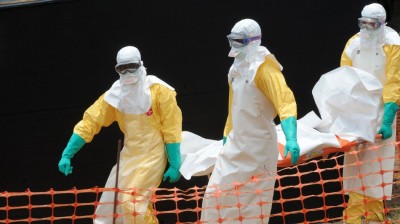
image via
The recent Ebola outbreak in West Africa has sent ripples throughout the world but majority of the population are still ignorant about the disease except for what they see or hear on media channels. Here are a few things you need to know about the virus thanks to the World Health Organisation (WHO)
Ebola virus disease (formerly known as Ebola haemorrhagic fever) is one of the world’s most virulent diseases with a case fatality rate of up to 90%.
Ebola first appeared in 1976 in 2 simultaneous outbreaks, in Nzara, Sudan, and in Yambuku, Democratic Republic of Congo. The latter was in a village situated near the Ebola River, from which the disease takes its name.
Ebola is introduced into the human population through close contact with the blood, secretions, organs or other bodily fluids of infected animals. It then spreads in the community through human-to-human transmission, with infection resulting from direct contact (through broken skin or mucous membranes) with the blood, secretions, organs or other bodily fluids of infected people, and indirect contact with environments contaminated with such fluids.
Ebola is a severe acute viral illness often characterized by the sudden onset of fever, intense weakness, muscle pain, headache and sore throat. This is followed by vomiting, diarrhoea, rash, impaired kidney and liver function, and in some cases, both internal and external bleeding. Laboratory findings include low white blood cell and platelet counts and elevated liver enzymes.
The incubation period, that is, the time interval from infection with the virus to onset of symptoms, is 2 to 21 days. It is not always possible to identify patients with EBV early because initial symptoms may be non-specific.
Other diseases that should be ruled out before a diagnosis of EVD can be made include: malaria, typhoid fever, shigellosis, cholera, leptospirosis, plague, rickettsiosis, relapsing fever, meningitis, hepatitis and other viral haemorrhagic fevers.
No licensed vaccine for EVD is available. Several vaccines are being tested, but none are available for clinical use. No specific treatment is available but new drug therapies are being evaluated.


